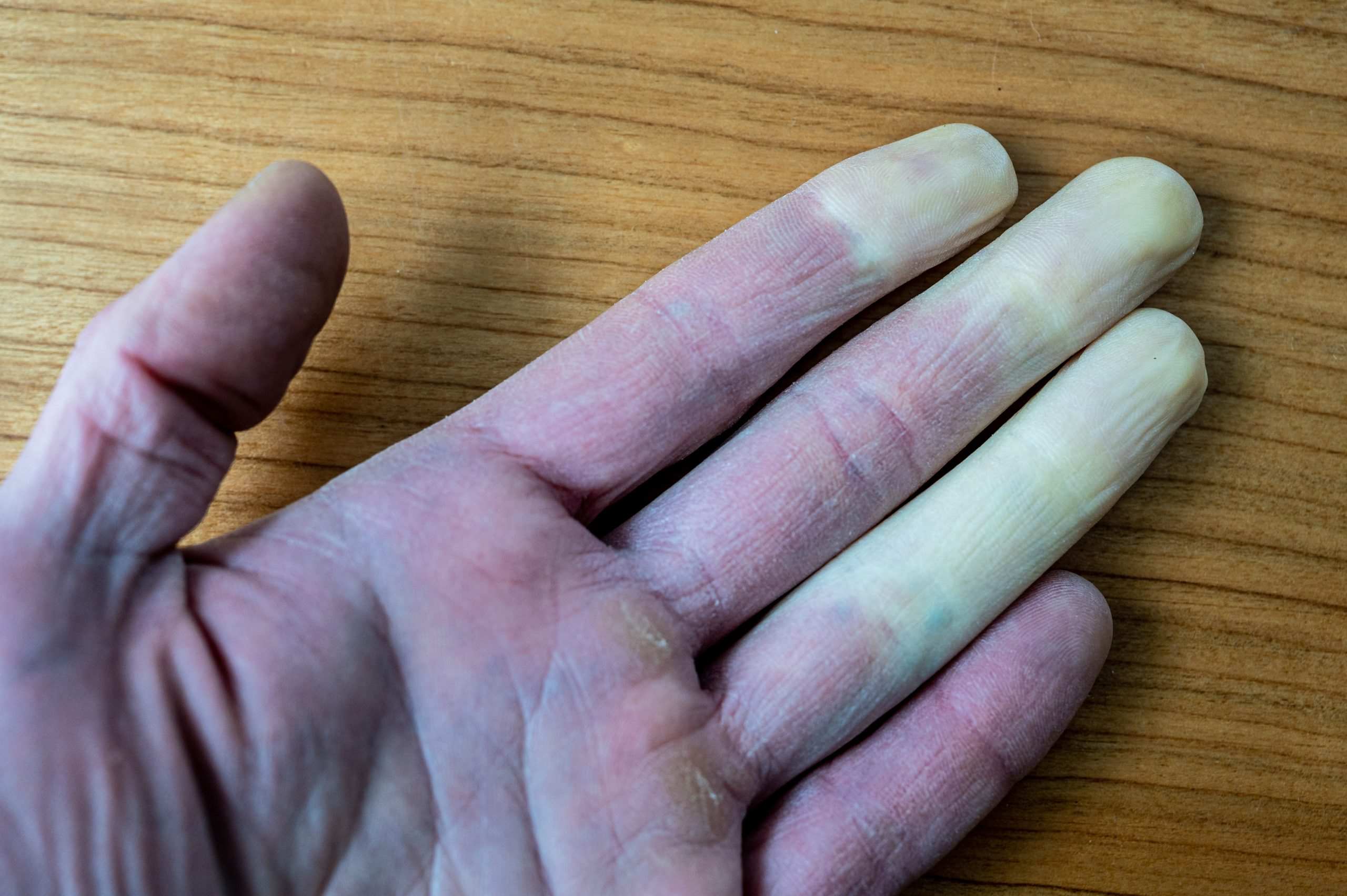
Raynaud's Disease, also known as Raynaud's Phenomenon, affects blood flow to certain parts of the body—usually fingers and toes. When exposed to cold or stress, blood vessels in these areas constrict more than normal, leading to color changes, numbness, and pain. Raynaud's can be primary, meaning it occurs on its own, or secondary, linked to other conditions like scleroderma or lupus. While it might sound rare, it impacts millions worldwide. Understanding this condition is crucial for managing symptoms and improving quality of life. Let's dive into 30 facts about Raynaud's Disease to shed light on its causes, symptoms, and treatments.
Key Takeaways:
- Raynaud's Disease affects blood flow to fingers and toes, causing numbness and color changes. It can be managed with lifestyle changes, medication, and support from organizations like the Raynaud's Association.
- Cold weather, stress, and smoking can trigger Raynaud's attacks. Wearing warm gloves, avoiding caffeine, and seeking support from online communities can help manage the condition and improve quality of life.
What is Raynaud's Disease?
Raynaud's Disease, also known as Raynaud's Phenomenon, affects blood flow to certain parts of the body—usually fingers and toes. It causes these areas to feel numb and cold in response to cold temperatures or stress.
- Raynaud's Disease is named after French doctor Maurice Raynaud, who first described the condition in 1862.
- It affects approximately 5% of the population, with women being more commonly affected than men.
- The disease can be primary (occurring on its own) or secondary (associated with other diseases like lupus or scleroderma).
Symptoms of Raynaud's Disease
Understanding the symptoms can help in early diagnosis and management. These symptoms often appear in response to cold or stress.
- Common symptoms include color changes in the skin of the affected areas, turning white, blue, and then red.
- Numbness or tingling in the fingers or toes is a frequent complaint.
- Some people experience throbbing, stinging pain upon warming or relief of stress.
- In severe cases, ulcers or sores can develop on the affected areas.
Causes and Triggers
Knowing what triggers Raynaud's Disease can help in managing the condition better. Various factors can contribute to its onset.
- Cold weather is a significant trigger for Raynaud's attacks.
- Emotional stress can also provoke symptoms.
- Smoking constricts blood vessels and can worsen symptoms.
- Certain medications, like beta-blockers, can trigger or exacerbate Raynaud's Disease.
Diagnosis of Raynaud's Disease
Diagnosing Raynaud's Disease involves a combination of medical history, physical exams, and specific tests.
- A doctor may perform a cold stimulation test to observe the reaction of fingers or toes to cold.
- Nailfold capillaroscopy involves examining the tiny blood vessels near the fingernails.
- Blood tests may be conducted to rule out other conditions, especially in secondary Raynaud's.
Treatment Options
While there's no cure, various treatments can help manage symptoms and improve quality of life.
- Lifestyle changes, like avoiding cold and managing stress, are often the first line of defense.
- Medications such as calcium channel blockers can help dilate blood vessels and improve blood flow.
- In severe cases, surgical options like sympathectomy may be considered.
- Biofeedback and relaxation techniques can help manage stress-induced attacks.
Living with Raynaud's Disease
Adapting to life with Raynaud's involves practical steps and lifestyle adjustments to minimize symptoms.
- Wearing warm gloves and socks can help keep extremities warm.
- Using hand warmers or heated gloves can be beneficial during cold weather.
- Regular exercise improves overall blood circulation.
- Avoiding caffeine and nicotine can reduce the frequency of attacks.
Complications of Raynaud's Disease
While many people manage Raynaud's without significant issues, complications can arise, especially in severe cases.
- Chronic ulcers or sores can develop on affected areas.
- In rare cases, severe Raynaud's can lead to tissue damage or even gangrene.
- Secondary Raynaud's is often associated with more severe complications due to underlying diseases.
Research and Future Directions
Ongoing research aims to better understand Raynaud's Disease and develop more effective treatments.
- Studies are exploring the genetic factors that may contribute to Raynaud's.
- New medications are being tested to improve blood flow and reduce symptoms.
- Research into the role of the immune system in Raynaud's is ongoing.
Support and Resources
Finding support and resources can make living with Raynaud's more manageable.
- Support groups and online communities offer a platform to share experiences and tips.
- Organizations like the Raynaud's Association provide valuable information and resources for those affected.
Final Thoughts on Raynaud's Disease
Raynaud's disease, though often overlooked, affects many people worldwide. Understanding its triggers, symptoms, and management can make a significant difference in the lives of those who suffer from it. From avoiding cold exposure to managing stress, small lifestyle changes can help mitigate the symptoms. Knowing when to seek medical advice is crucial, especially if symptoms worsen or don't improve with self-care. Remember, Raynaud's can sometimes signal more serious underlying conditions. Staying informed and proactive about your health is key. If you or someone you know experiences frequent episodes, don't hesitate to consult a healthcare professional. Awareness and early intervention can lead to better management and improved quality of life. Stay warm, stay informed, and take care of your hands and feet.
Frequently Asked Questions
Was this page helpful?
Our commitment to delivering trustworthy and engaging content is at the heart of what we do. Each fact on our site is contributed by real users like you, bringing a wealth of diverse insights and information. To ensure the highest standards of accuracy and reliability, our dedicated editors meticulously review each submission. This process guarantees that the facts we share are not only fascinating but also credible. Trust in our commitment to quality and authenticity as you explore and learn with us.
